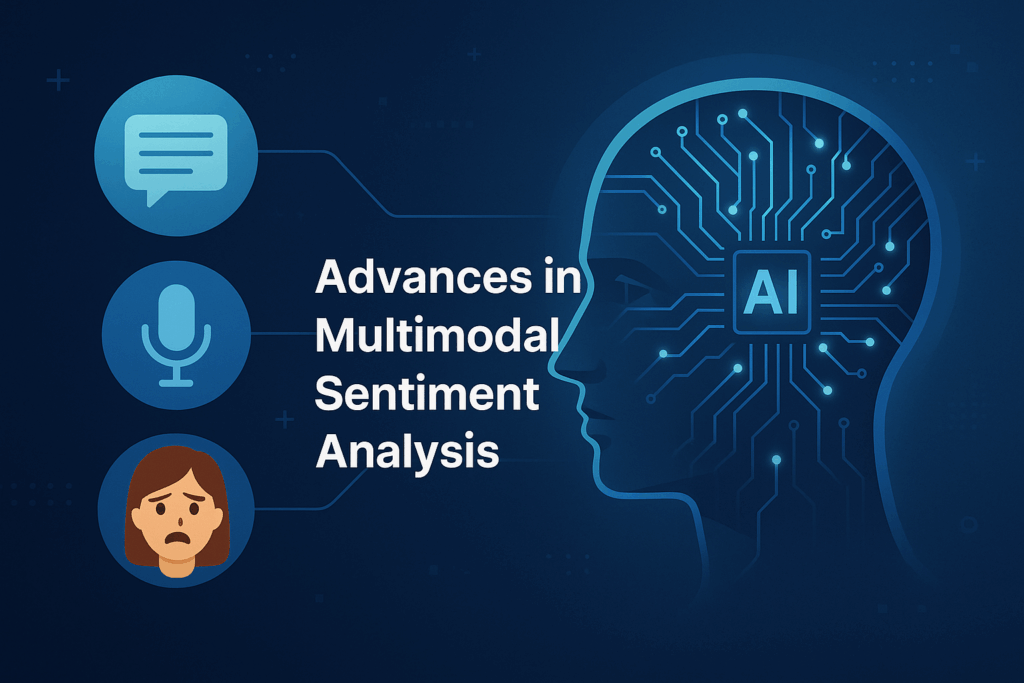In today’s fast-evolving AI landscape, machines are no longer limited to understanding words alone — they are now learning to sense how we feel. This breakthrough is made possible through Multimodal Sentiment Analysis (MSA) — a powerful AI approach that interprets human emotions by analyzing text, voice, and facial expressions together.
Whether you’re a student diving into AI or an aspiring engineer exploring real-world applications, understanding how emotional intelligence in machines works is essential. Let’s explore how it’s done and why it matters.
What is Multimodal Sentiment Analysis?
Multimodal Sentiment Analysis refers to the process by which AI combines insights from multiple data sources (modalities) — such as spoken language, written text, and visual cues — to interpret human emotions more accurately and contextually.
Unlike traditional sentiment analysis, which focuses only on text (like positive, negative, or neutral reviews), multimodal systems analyze how something is said, not just what is said.
How AI Detects Emotions Across Modalities
Modern MSA systems use deep learning, natural language processing (NLP), computer vision, and speech analysis to mimic how humans process emotional information.
1. Text-Based Emotion Recognition
Extracts sentiment from sentence structure, keywords, punctuation, and even emojis
Uses advanced models like BERT, GPT, and LSTMs to capture context and tone
Handles sarcasm, irony, and emotional nuances more effectively
2. Voice-Based Emotion Analysis
Analyzes pitch, tone, speed, volume, and pauses
Converts audio signals into spectrograms for deep neural networks to interpret
Recognizes emotions such as anger, joy, and anxiety from speech patterns
3. Facial Expression Detection
Uses convolutional neural networks (CNNs) to track micro-expressions
Interprets visual cues like eyebrow movement, smiles, frowns, and eye direction
Provides non-verbal context to spoken or written content
Real-World Applications of Emotional AI
Multimodal sentiment analysis is already being integrated into various industries. Here’s how:
Customer Support: AI chatbots that detect frustration and escalate issues to human agents
Mental Health: Tools for identifying signs of depression or stress through speech and facial analysis
E-Learning: Systems that adjust content delivery based on student engagement or confusion
Marketing & UX: Analyzing user reactions to ads, websites, or videos for better targeting
Entertainment: Creating adaptive game characters that respond to player emotions
Benefits of Multimodal Emotion AI
Higher accuracy in emotion detection
Context-aware interactions with users
Improved personalization and empathy in systems
Early detection of emotional or psychological issues
Ethical Considerations You Must Know
As with all powerful technology, emotional AI comes with responsibilities. Developers and researchers must be aware of the following ethical challenges:
🔐 Privacy Concerns: Analyzing facial expressions or tone may feel intrusive if done without consent
⚖️ Bias and Misinterpretation: Emotional cues differ across cultures and individuals, increasing the risk of misjudgment
👁 Transparency: Users should be clearly informed when their emotions are being monitored
🤖 Overreliance on AI: Replacing human empathy entirely with algorithms could lead to emotionally disconnected systems
Takeaway for Students
As emotional intelligence becomes a critical component of AI systems, students and future tech leaders must:
Learn how AI models integrate data across modalities
Understand cross-disciplinary methods (NLP + Computer Vision + Speech Recognition)
Prioritize ethical design and responsible deployment
💬 “The future of AI isn’t just smart — it’s emotionally aware. But with great power comes great responsibility.”
Happy Learning!

